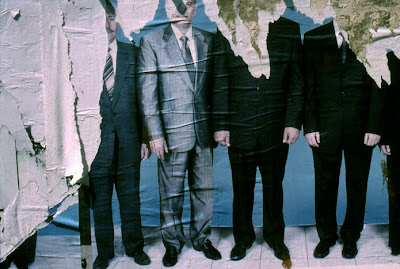
I have this theory about photographs: If you take pictures of naked, beautiful people, you will probably end up with a photograph that people want to look at.
So, I was instantly skeptical of the hipster art world's obsession with
Ryan McGinley and his photographs of young, beautiful people taking a cross-country road trip and hanging out naked in trees and whatnot. It's like the worst art-world-preoccupation hybrid: The Romanticised, tragic "Youth," and the ready-made beauty of getting them naked.
The problem with this theory is that Ryan McGinley trudges through in spite of all of that bullshit and still makes unbelievably stunning images, despite the fact that his subjects are one of my most resented go-to art cliches.
I wanted to know what is up with it. So I decided to look at some of his non-naked-young-people, leading-a-life-you-can't photos, and turned to his photos of people at Morrissey concerts.

First off, this is a great idea for a photo series. Second, in this picture and in
this one (opens in another window), it strikes me that there's a theme going on: the careful observation of light. In terms of concert lighting and in terms of the space that the light is allowed to permeate.
What McKinley does in this series is not so much take a photograph of his subjects, but takes photographs of the light around his subjects.
This might be a trite, photo-102-ism, but in terms of textbook examples, I can't think of someone who does this better than Ryan McGinley. These are not images about bodies, they are images about the spaces that surround bodies:


The works McGinley creates are desexualized, despite the raw sexual energy that should exist within them. That's because the point of the nudity, despite the years of training by Calvin Klein ads, is not about sex, but about power: the power of a body to mold space. The light exists because it is shaped by the human form; the result is that all of his images carry the reminder of the power of human will, combined with the gentleness of human fragility.
(More NSFW examples
here and
here.)
This is missing from, say, his straight-up pictures of people fucking, which lack everything awesome about what McGinley can do and instead teeters into dumb American Apparel advertisement + vacuous (worst of) Warhol territory. Which is a shame. I know, I know: Edgy, fringe-of-society, blah blah blah. Very progressive or whatever. Sadly, it's also been made instantly boring since its appropriation by Vice-magazine-styled douchebaggery.
Don't get me wrong, Ryan McGinley, you're brilliant and I tend to resent other artists who are my age most of the time, so totally rack that last paragraph up to good old-fashioned envy. But I wish you'd stick to the light, is all, sir.
(Oh PS he did the album art for the last Sigur Ros album).





















